A line much derided by every real engineer I've ever met, mere words cannot express quite how wrong he was on that.Kelly Johnson's "if it looks beautiful, it'll fly beautifully" approach.
The Presidents: The Vietnam War Edition
- Thread starter Nathan Madien
- Start date
-
We have updated our Community Code of Conduct. Please read through the new rules for the forum that are an integral part of Paradox Interactive’s User Agreement.
You are using an out of date browser. It may not display this or other websites correctly.
You should upgrade or use an alternative browser.
You should upgrade or use an alternative browser.
A line much derided by every real engineer I've ever met, mere words cannot express quite how wrong he was on that.
You mean to tell me there's no relationship between what we perceive as aesthetic beauty and aerodynamics in aircraft? Aside from which, in the case of the Nelson class, he was right. That ship was a pig to maneuver, its guns fouled its own bridge, and it had maintenance issues more like a German car than a battleship. All of those issues were related to the fact that it was ugly, being as they were caused by its contortions to meet the Washington Naval Treaty.
The forum ate my clever response, so here is the short version.
1. Aesthetics are subjective and variable, changing over time and from place to place. See David Hasslehoff's continued domination of the German pop charts while being a joke everywhere else.
2. Relevant example the Blackburn Buccaneer. Regarded as unusual looking when it was introduced it was also very aerodynamically efficient and those two facts were connected. It had been area ruled which was a new idea at the time. The Buccaneer was at no point regarded as aesthetically pleasing, it didn't get the nickname "Banana" by being beautiful, but it is good at punching through the air.
3. Finally, the Spitfire is widely regarded as the prettier but the Hurricane could out turn it, hardly a ringing endorsement of the statement is it?
1. Aesthetics are subjective and variable, changing over time and from place to place. See David Hasslehoff's continued domination of the German pop charts while being a joke everywhere else.
2. Relevant example the Blackburn Buccaneer. Regarded as unusual looking when it was introduced it was also very aerodynamically efficient and those two facts were connected. It had been area ruled which was a new idea at the time. The Buccaneer was at no point regarded as aesthetically pleasing, it didn't get the nickname "Banana" by being beautiful, but it is good at punching through the air.
3. Finally, the Spitfire is widely regarded as the prettier but the Hurricane could out turn it, hardly a ringing endorsement of the statement is it?
... None of which applies to the Nelson, which is what I was talking about in both posts you've bothered to reply to.
volksmarschall: Luckily for the Royal Navy, the USN is a friend.
I am looking forward to seeing you dive into the 1920's and early 30's one day, volksmarschall.
c0d5579: Thanks for the info.
The Royal Navy should relax and not try to compete with the USN.
El Pip: I didn't know that.
volksmarschall: Now we have nuclear ships!
c0d5579: Ah, Kelly Johnson. He makes a good tech team...
El Pip: ...But apparently not good on advice.
c0d5579: Who needs enemies when you have Nelson?
El Pip: Wait...you mean someone actually takes David Hasslehoff seriously?
c0d5579: I find it funny that this AAR has somehow turned into "The c0d5579 and El Pip Show". I am easily amused by it.
Thanks to earlier suggestions, I was able to hammer out an update about Stalin's death. Like "Communist China declares war on the Soviet Union" in the previous AAR, this update is an exercise in explaining the AI.
------------------------------------------------------------------------------------
The Passing of the Supreme Soviet
In the United States, power is spread out into three branches: Legislative (Congress), Executive (the White House), and Judicial (the Supreme Court). Each branch, in theory, is equal to each other and each has the ability to check the other two. In 1953, the Legislative Branch was in the hands of Russell and Rayburn, the Executive Branch was represented by Stevenson, and the Judicial Branch was overseen by Shake. By contrast, power in the Soviet Union rested with one supreme leader: Joseph Stalin.
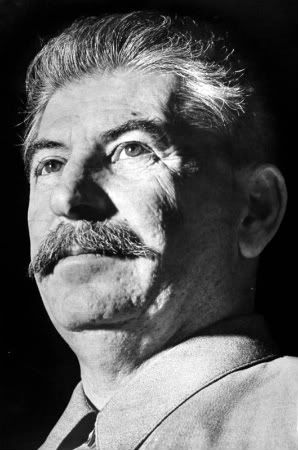
The son of a Georgian cobbler, Stalin was studying at an Orthodox seminary when he came across the writings of Marxist revolutionary Vladimir Lenin. Joining Lenin’s Bolshevik group in 1903, Stalin rose to the top during Russia’s bloody transformation into the Soviet Union – eventually becoming General Secretary of the Communist Party in 1922. When Lenin died from a heart attack in January 1924, Stalin pushed his rivals aside and became the undisputed dictator of the Soviet Union. Showing no mercy, he pushed for more rapid industrialization and central control of the economy. Anyone who tried to resist Stalin’s rule, or were imagined to, were executed. By 1939, Stalin had absolute control over the Soviet people. He also had to contend with the emergence of the new kid on the European block: Nazi Germany.
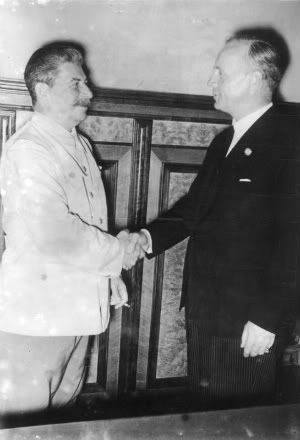
That August, Stalin signed a non-aggression pact with the Germans that divided Eastern Europe between them. While the Germans took over much of Europe during the next two years, Stalin gobbled up territory in Eastern Europe and built up the Soviet military. In the summer of 1941, Germany broke the non-aggression pact and invaded the Soviet Union in Operation Barbarossa. Despite impressive gains, the Germans failed to break Soviet morale and the Red Army held on in the face of heavy losses. Once the Americans were ashore in Italy and were advancing towards Southern France, the Germans were forced to divert divisions away from the Eastern Front. This gave Stalin the breathing space he needed to consolidate the Red Army and go on the offensive. Turning the war around on the Eastern Front, the Red Army proceeded to throw the enemy off their land and pushed into Eastern Europe. In the summer of 1944, Germany surrendered and American and Soviet troops linked up at the Oder River.

Sadly, the friendship between the Soviets and the Americans didn’t last. In February 1947, Japan surrendered – ending the Second World War. After the war, the Americans and the Soviets had competing visions of the post-war world. The ideological differences between them formed a new conflict: the Cold War. Stalin wanted to expand Communist influence and control into Europe, the Middle East, and Asia. When the Dewey Administration reacted with the policy of physical and economic containment, the Soviets were stopped in their tracks. Instead, Stalin came down hard on Eastern Europe and his portion of China. From Finland to Bulgaria, Eastern Europe was transformed into an oppressed, nationalized region called the Eastern Bloc. In Asia, he made a deal with Nationalist China to be allowed to supply Communist guerillas in Vietnam in exchange for a non-aggression pact. By the early 1950s, Stalin could sit comfortably and study the map of his empire which stretched from the Oder River to the Pacific Ocean.
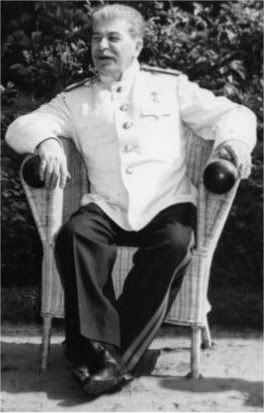
However, not all was well for the Man of Steel as 1953 began. His never-ending paranoia – which had resulted in the deaths of millions of his own people – had taken a heavy toll on his mental health. His physical health, too, was in a sharp state of decline. On March 1st, after an all-night dinner and movie with cronies Lavrenti P. Beria, Georgy Malenkov, Nikolai Bulganin, and Nikita Khrushchev, Stalin returned home and went to bed. During the night, he suffered a crippling stroke that paralyzed the right side of his body. The next day, not having heard from Stalin for quite a while, a servant entered Stalin’s bedroom to check up on him and was horrified to see the Generalissimo sprawled out on the floor obviously paralyzed. Beria was the first official on the scene and he took charge of the situation. Strangely, he waited awhile before allowing doctors into the bedroom to tend to Stalin. After drifting in and out of conscious for a few days, on March 5th, Stalin was officially declared by doctors to be dead at the age of seventy-four from a cerebral hemorrhage.
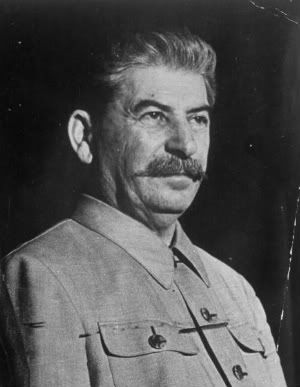
Joseph Vissarionovich Stalin (December 18th, 1878 – March 5th, 1953)
Following Stalin’s death, he was embalmed and was laid to rest inside Lenin’s Mausoleum alongside his predecessor. Although the official cause was cerebral hemorrhage, the truth behind Stalin’s demise is anything but innocent. It was no accident that Beria was the first man on the scene following the discovery of Stalin’s paralyzed body. During the all-night dinner, Beria had slipped a powerful rat poison into Stalin’s meal that contributed to the cerebral hemorrhage. When the Minister of Internal Affairs – the official name for the position of chief of the Soviet security and secret police apparatus – arrived in the bedroom, he wanted to make sure the poison had done its’ job before summoning medical attention.

Why did Beria kill off Stalin? Beria was enormously ambitious, and he knew that killing off his boss would open opportunities for him. However, he wasn’t the only one who wanted to see Stalin dead for personal reasons. Vyacheslav Molotov, the sharp-minded Minister of Foreign Affairs, was a close associate of Stalin’s and was considered to be his most likely successor. However, in early 1953, rumors that Stalin was considering launching a new purge to clear out Molotov and other senior leaders forced the cold-blooded Minister to watch his back. Ruthless to the max, Beria approached Molotov and made an offer: he could poison Stalin, which would save Molotov from being kicked to the curb. With Stalin gone, Molotov could then succeed him as General Secretary. What did Beria want in return? Absolute power over all security matters and a say in national decision-making. In the world of kill or be killed, it was an offer Molotov couldn’t refuse.

The establishment of the Molotov-Beria axis was approved by the Politburo (the Communist Party Congress). Despite the calls of younger members - most notably Khrushchev - for new, more liberal leadership, the older members of the Politburo stood behind the Molotov-Beria axis instead. For all their public proclamations of being tough, the Soviets were quite insecure during the beginning of the Cold War. Despite being a superpower, the Soviet Union greatly lagged behind the United States technologically-wise. For instance, the Americans enjoyed a huge lead in nuclear weaponry that had the Soviets in awe. In 1951, the Soviets finally acquired the atomic bomb after years of slow research…only to be dramatically one-upped by the American detonation of the terrifying hydrogen bomb. Aided by captured German research, the Americans also blazed the way in rocket and jet research…leaving the Soviets completely in the dust. With this in mind, the Politburo felt that maintaining a tough-guy Stalinist image could hide deep insecurities from the West and that following Khrushchev’s advice would create the (correct) impression that all was not well in the Soviet Union. As Stalinists, Molotov and Beria fit the continuity bill quite nicely (although the latter was a bit more liberal than the former). Once Molotov was installed as the Head of Government, Marshal of the Soviet Union Kliment Y. Voroshilov was chosen to serve as the new Head of State.
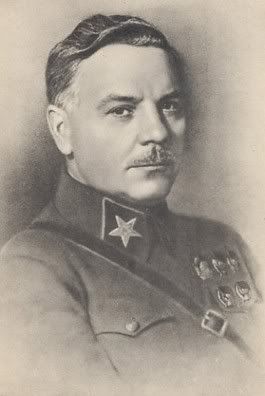
The United States reacted cautiously to the change in Soviet leadership. Acheson advised staying the anti-Communist course and not letting the guard down just because Stalin was dead. “He is Stalin’s right-hand man,” the Secretary of State said during a meeting of the National Security Council held in the wake of Molotov taking the reins, “He has carried out Stalin’s brutal orders with no remorse. Molotov is cold-blooded, and I have no reason to expect any changes for the better with him in charge. Mr. President, at this point in time it would be unwise to engage in serious discussions with the other side. Instead, I counsel treating this situation as being ‘business as usual’. Stalin may be gone, but his way of doing things lives on.”
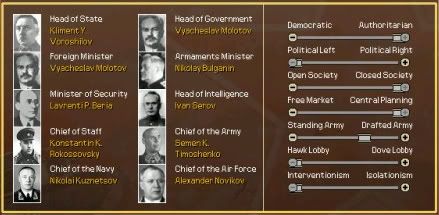
I am looking forward to seeing you dive into the 1920's and early 30's one day, volksmarschall.
c0d5579: Thanks for the info.
The Royal Navy should relax and not try to compete with the USN.
El Pip: I didn't know that.
volksmarschall: Now we have nuclear ships!
c0d5579: Ah, Kelly Johnson. He makes a good tech team...
El Pip: ...But apparently not good on advice.
c0d5579: Who needs enemies when you have Nelson?
El Pip: Wait...you mean someone actually takes David Hasslehoff seriously?
c0d5579: I find it funny that this AAR has somehow turned into "The c0d5579 and El Pip Show". I am easily amused by it.
Thanks to earlier suggestions, I was able to hammer out an update about Stalin's death. Like "Communist China declares war on the Soviet Union" in the previous AAR, this update is an exercise in explaining the AI.
------------------------------------------------------------------------------------
The Passing of the Supreme Soviet
In the United States, power is spread out into three branches: Legislative (Congress), Executive (the White House), and Judicial (the Supreme Court). Each branch, in theory, is equal to each other and each has the ability to check the other two. In 1953, the Legislative Branch was in the hands of Russell and Rayburn, the Executive Branch was represented by Stevenson, and the Judicial Branch was overseen by Shake. By contrast, power in the Soviet Union rested with one supreme leader: Joseph Stalin.

The son of a Georgian cobbler, Stalin was studying at an Orthodox seminary when he came across the writings of Marxist revolutionary Vladimir Lenin. Joining Lenin’s Bolshevik group in 1903, Stalin rose to the top during Russia’s bloody transformation into the Soviet Union – eventually becoming General Secretary of the Communist Party in 1922. When Lenin died from a heart attack in January 1924, Stalin pushed his rivals aside and became the undisputed dictator of the Soviet Union. Showing no mercy, he pushed for more rapid industrialization and central control of the economy. Anyone who tried to resist Stalin’s rule, or were imagined to, were executed. By 1939, Stalin had absolute control over the Soviet people. He also had to contend with the emergence of the new kid on the European block: Nazi Germany.

That August, Stalin signed a non-aggression pact with the Germans that divided Eastern Europe between them. While the Germans took over much of Europe during the next two years, Stalin gobbled up territory in Eastern Europe and built up the Soviet military. In the summer of 1941, Germany broke the non-aggression pact and invaded the Soviet Union in Operation Barbarossa. Despite impressive gains, the Germans failed to break Soviet morale and the Red Army held on in the face of heavy losses. Once the Americans were ashore in Italy and were advancing towards Southern France, the Germans were forced to divert divisions away from the Eastern Front. This gave Stalin the breathing space he needed to consolidate the Red Army and go on the offensive. Turning the war around on the Eastern Front, the Red Army proceeded to throw the enemy off their land and pushed into Eastern Europe. In the summer of 1944, Germany surrendered and American and Soviet troops linked up at the Oder River.

Sadly, the friendship between the Soviets and the Americans didn’t last. In February 1947, Japan surrendered – ending the Second World War. After the war, the Americans and the Soviets had competing visions of the post-war world. The ideological differences between them formed a new conflict: the Cold War. Stalin wanted to expand Communist influence and control into Europe, the Middle East, and Asia. When the Dewey Administration reacted with the policy of physical and economic containment, the Soviets were stopped in their tracks. Instead, Stalin came down hard on Eastern Europe and his portion of China. From Finland to Bulgaria, Eastern Europe was transformed into an oppressed, nationalized region called the Eastern Bloc. In Asia, he made a deal with Nationalist China to be allowed to supply Communist guerillas in Vietnam in exchange for a non-aggression pact. By the early 1950s, Stalin could sit comfortably and study the map of his empire which stretched from the Oder River to the Pacific Ocean.

However, not all was well for the Man of Steel as 1953 began. His never-ending paranoia – which had resulted in the deaths of millions of his own people – had taken a heavy toll on his mental health. His physical health, too, was in a sharp state of decline. On March 1st, after an all-night dinner and movie with cronies Lavrenti P. Beria, Georgy Malenkov, Nikolai Bulganin, and Nikita Khrushchev, Stalin returned home and went to bed. During the night, he suffered a crippling stroke that paralyzed the right side of his body. The next day, not having heard from Stalin for quite a while, a servant entered Stalin’s bedroom to check up on him and was horrified to see the Generalissimo sprawled out on the floor obviously paralyzed. Beria was the first official on the scene and he took charge of the situation. Strangely, he waited awhile before allowing doctors into the bedroom to tend to Stalin. After drifting in and out of conscious for a few days, on March 5th, Stalin was officially declared by doctors to be dead at the age of seventy-four from a cerebral hemorrhage.

Joseph Vissarionovich Stalin (December 18th, 1878 – March 5th, 1953)
Following Stalin’s death, he was embalmed and was laid to rest inside Lenin’s Mausoleum alongside his predecessor. Although the official cause was cerebral hemorrhage, the truth behind Stalin’s demise is anything but innocent. It was no accident that Beria was the first man on the scene following the discovery of Stalin’s paralyzed body. During the all-night dinner, Beria had slipped a powerful rat poison into Stalin’s meal that contributed to the cerebral hemorrhage. When the Minister of Internal Affairs – the official name for the position of chief of the Soviet security and secret police apparatus – arrived in the bedroom, he wanted to make sure the poison had done its’ job before summoning medical attention.

Why did Beria kill off Stalin? Beria was enormously ambitious, and he knew that killing off his boss would open opportunities for him. However, he wasn’t the only one who wanted to see Stalin dead for personal reasons. Vyacheslav Molotov, the sharp-minded Minister of Foreign Affairs, was a close associate of Stalin’s and was considered to be his most likely successor. However, in early 1953, rumors that Stalin was considering launching a new purge to clear out Molotov and other senior leaders forced the cold-blooded Minister to watch his back. Ruthless to the max, Beria approached Molotov and made an offer: he could poison Stalin, which would save Molotov from being kicked to the curb. With Stalin gone, Molotov could then succeed him as General Secretary. What did Beria want in return? Absolute power over all security matters and a say in national decision-making. In the world of kill or be killed, it was an offer Molotov couldn’t refuse.

The establishment of the Molotov-Beria axis was approved by the Politburo (the Communist Party Congress). Despite the calls of younger members - most notably Khrushchev - for new, more liberal leadership, the older members of the Politburo stood behind the Molotov-Beria axis instead. For all their public proclamations of being tough, the Soviets were quite insecure during the beginning of the Cold War. Despite being a superpower, the Soviet Union greatly lagged behind the United States technologically-wise. For instance, the Americans enjoyed a huge lead in nuclear weaponry that had the Soviets in awe. In 1951, the Soviets finally acquired the atomic bomb after years of slow research…only to be dramatically one-upped by the American detonation of the terrifying hydrogen bomb. Aided by captured German research, the Americans also blazed the way in rocket and jet research…leaving the Soviets completely in the dust. With this in mind, the Politburo felt that maintaining a tough-guy Stalinist image could hide deep insecurities from the West and that following Khrushchev’s advice would create the (correct) impression that all was not well in the Soviet Union. As Stalinists, Molotov and Beria fit the continuity bill quite nicely (although the latter was a bit more liberal than the former). Once Molotov was installed as the Head of Government, Marshal of the Soviet Union Kliment Y. Voroshilov was chosen to serve as the new Head of State.

The United States reacted cautiously to the change in Soviet leadership. Acheson advised staying the anti-Communist course and not letting the guard down just because Stalin was dead. “He is Stalin’s right-hand man,” the Secretary of State said during a meeting of the National Security Council held in the wake of Molotov taking the reins, “He has carried out Stalin’s brutal orders with no remorse. Molotov is cold-blooded, and I have no reason to expect any changes for the better with him in charge. Mr. President, at this point in time it would be unwise to engage in serious discussions with the other side. Instead, I counsel treating this situation as being ‘business as usual’. Stalin may be gone, but his way of doing things lives on.”

Last edited:
Seems all too plausible, though I am pleased the Soviets are falling behind in jet research; means Atlee didn't hand them the Nene jet engine on a plate.
I'm also glad to have been of amusement, it's always nice to spread a little joy in the world!
I'm also glad to have been of amusement, it's always nice to spread a little joy in the world!
I think you should write an event for sometime in the early 1960s, whereby Molotov and Beria have a power struggle (which I think is inevitable) and the winner becomes supreme head of the Soviet state. Who wins though will be 50:50, decided by the AI. Molotov could almost certianly count on the Red Army to support him, but Beria has the uber scary NKVD to get rid of his opponents.
I know about trying to justify the AI though; in one game I was playing (which then crashed, damnit), the Soviet Union occupied and kept Slovakia instead of 'liberating' it.
I know about trying to justify the AI though; in one game I was playing (which then crashed, damnit), the Soviet Union occupied and kept Slovakia instead of 'liberating' it.
Kurt_Steiner: Yup. Khrushchev will have to remain on the backbenches for the time being (until the AI says otherwise).
El Pip: We can all breath easier at night knowing that Churchill didn't hand jet technology over to the Soviets.
Yes, it is.
talt: Good idea. Unless the AI comes up with something, I will make sure there's a power struggle in the Soviet Union.
I am sorry to hear that your game crashed.
This was a fun update to write. I took the historic "Beria kills Stalin" rumor and transformed it into an ahistoric coup. As I was writing, the ideas the readers shared fell into place naturally. Thanks again for the help.
El Pip: We can all breath easier at night knowing that Churchill didn't hand jet technology over to the Soviets.
Yes, it is.
talt: Good idea. Unless the AI comes up with something, I will make sure there's a power struggle in the Soviet Union.
I am sorry to hear that your game crashed.
This was a fun update to write. I took the historic "Beria kills Stalin" rumor and transformed it into an ahistoric coup. As I was writing, the ideas the readers shared fell into place naturally. Thanks again for the help.
Touring the Pacific
While the Soviet Union was undergoing a change in leadership, across the Atlantic, two pieces of legislation landed on Stevenson’s desk. The first piece dealt with the enforcement of anti-trust laws. A supporter of free competitive enterprise, the Administration decided to take Big Business down a notch by increasing appropriations for the Department of Justice and the Federal Trade Commission to vigorously investigate companies that violated anti-trust laws. The second piece of legislation took dead aim at the Soviets by expanding the State Department’s “Voice of America” program. Established by the Willkie Administration in 1942, the VOA allowed the United States to broadcast music, news, commentary, and other programming into enemy countries for the reason that “we will always tell you the truth.”
By broadcasting behind the Iron Curtain, the Americans wanted to counter harmful Soviet propaganda that was being directed at them. With Moscow trying to aggressively jam VOA broadcasts electronically, the bill the President signed enabled the State Department to build additional broadcast stations and research ways to skid around the jamming so those living under Soviet subjugation could listen to American broadcasts.

When it came to fighting the Cold War, Stevenson believed that collective security was vitally important in opposing the Soviets. As he explained to reporters during a press conference:
“The last thing we want, I would suppose, is to stand alone against this threat. Our allies share with us not only bases and raw materials and manpower, but – more important – the common faith in the worth of freemen, which is our most potent weapon. We need them as they need us.”
In early April, Stevenson embarked on his first overseas trip as President. Traveling across the Pacific, he arrived in Tokyo, Japan on April 10th. His mission was to visit America’s friends in Asia and stress that “we are all in this together.”
Stepping off the plane in Tokyo, Stevenson was welcomed by Douglas MacArthur, the Military Governor of Japan. Since 1947, he had been supervising Japan’s transition from a war-ravaged nation into a newborn Democracy. Being shown around the Japanese capital, the President was impressed by how the country had moved past the brutal experiences of war and was moving forward. Ruins resulting from endless American bombing raids during the war were being cleared away and were being replaced by new high rise buildings, out-of-control inflation was being brought under control, and Japanese dependency on American aide for day-to-day living was gradually being reduced. Although times were still rough in Japan, there were signs that recovery was on the horizon. One thing Stevenson learned from talking to civilians and government figures alike was the anxiousness of the Japanese people to be allowed to rule themselves completely. MacArthur had already restored some autonomy to the civilian authorities, but there was a growing sense that people on both sides of the Pacific wanted to end the occupation forthright. This growing pressure contributed to America’s decision to sign a treaty with Japan towards the end of 1953 which ended the occupation and restored full sovereignty to Japan.
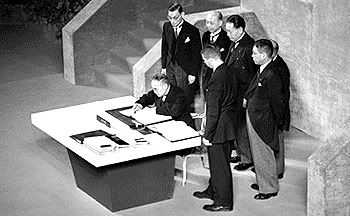
Stevenson concluded the Japanese leg of his trip by attending a hanami - the Japanese tradition of watching cherry blossom flowers (Sakura) bloom - with Emperor Hirohito. He then moved on to Seoul, Korea. The President wasn’t impressed by ruler Syngman Rhee, telling Acheson, “If it wasn’t for the fact that he hates Communism, I see no reason to work with this ruthless dictator.”
What he was impressed with was the forward-looking attitude of the Korean people. Standing on their own two feet after a few decades of enduring Japanese occupation, the Koreans wanted their country to be as strong as possible. Rather than strengthen the country militarily, Korea focused on achieving economic strength instead. With American support, Korea in 1953 was laying the foundation for becoming the economic powerhouse that she is today.
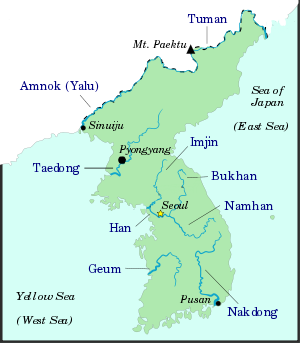
Leaving Seoul, the President and his entourage flew to Hong Kong – deliberately skipping Nationalist China. The United States Government was still angry at Kai-shek for cutting a deal with the Communists (even though that didn’t stop American companies and investors from doing business with the Chinese). At Acheson’s insistence, Nanjing was left off the travel itinerary and would be given the cold shoulder treatment instead. After seeing how the citizens of Hong Kong were living under British rule, Stevenson went to the Philippines – where he promised the Philippine government new trade agreements favorable to them. From Manila, it was on to Singapore for a layover. Leaving Singapore, the President wrapped up his tour by visiting Australia and New Zealand. Speaking to Australians and New Zealanders alike, Stevenson expressed his belief that the two nations could make the biggest impact in checking the growth of Communism in Asia. “By standing together,” he said, “We stand as one.”
Indeed, in the years to come, Australia and New Zealand would stand alongside the United States in the fight against Communism by contributing manpower in the Vietnam War.
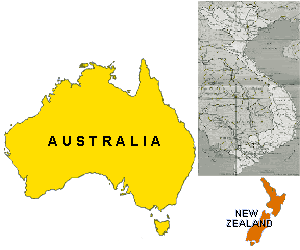
Of course, direct American/Aussie/Kiwi military involvement in Vietnam is still off into the future. What the Stevenson Administration faced in 1953 was the question of what to do about the ongoing French effort to hold onto their Vietnamese colony.
While the Soviet Union was undergoing a change in leadership, across the Atlantic, two pieces of legislation landed on Stevenson’s desk. The first piece dealt with the enforcement of anti-trust laws. A supporter of free competitive enterprise, the Administration decided to take Big Business down a notch by increasing appropriations for the Department of Justice and the Federal Trade Commission to vigorously investigate companies that violated anti-trust laws. The second piece of legislation took dead aim at the Soviets by expanding the State Department’s “Voice of America” program. Established by the Willkie Administration in 1942, the VOA allowed the United States to broadcast music, news, commentary, and other programming into enemy countries for the reason that “we will always tell you the truth.”
By broadcasting behind the Iron Curtain, the Americans wanted to counter harmful Soviet propaganda that was being directed at them. With Moscow trying to aggressively jam VOA broadcasts electronically, the bill the President signed enabled the State Department to build additional broadcast stations and research ways to skid around the jamming so those living under Soviet subjugation could listen to American broadcasts.

When it came to fighting the Cold War, Stevenson believed that collective security was vitally important in opposing the Soviets. As he explained to reporters during a press conference:
“The last thing we want, I would suppose, is to stand alone against this threat. Our allies share with us not only bases and raw materials and manpower, but – more important – the common faith in the worth of freemen, which is our most potent weapon. We need them as they need us.”
In early April, Stevenson embarked on his first overseas trip as President. Traveling across the Pacific, he arrived in Tokyo, Japan on April 10th. His mission was to visit America’s friends in Asia and stress that “we are all in this together.”
Stepping off the plane in Tokyo, Stevenson was welcomed by Douglas MacArthur, the Military Governor of Japan. Since 1947, he had been supervising Japan’s transition from a war-ravaged nation into a newborn Democracy. Being shown around the Japanese capital, the President was impressed by how the country had moved past the brutal experiences of war and was moving forward. Ruins resulting from endless American bombing raids during the war were being cleared away and were being replaced by new high rise buildings, out-of-control inflation was being brought under control, and Japanese dependency on American aide for day-to-day living was gradually being reduced. Although times were still rough in Japan, there were signs that recovery was on the horizon. One thing Stevenson learned from talking to civilians and government figures alike was the anxiousness of the Japanese people to be allowed to rule themselves completely. MacArthur had already restored some autonomy to the civilian authorities, but there was a growing sense that people on both sides of the Pacific wanted to end the occupation forthright. This growing pressure contributed to America’s decision to sign a treaty with Japan towards the end of 1953 which ended the occupation and restored full sovereignty to Japan.

Stevenson concluded the Japanese leg of his trip by attending a hanami - the Japanese tradition of watching cherry blossom flowers (Sakura) bloom - with Emperor Hirohito. He then moved on to Seoul, Korea. The President wasn’t impressed by ruler Syngman Rhee, telling Acheson, “If it wasn’t for the fact that he hates Communism, I see no reason to work with this ruthless dictator.”
What he was impressed with was the forward-looking attitude of the Korean people. Standing on their own two feet after a few decades of enduring Japanese occupation, the Koreans wanted their country to be as strong as possible. Rather than strengthen the country militarily, Korea focused on achieving economic strength instead. With American support, Korea in 1953 was laying the foundation for becoming the economic powerhouse that she is today.

Leaving Seoul, the President and his entourage flew to Hong Kong – deliberately skipping Nationalist China. The United States Government was still angry at Kai-shek for cutting a deal with the Communists (even though that didn’t stop American companies and investors from doing business with the Chinese). At Acheson’s insistence, Nanjing was left off the travel itinerary and would be given the cold shoulder treatment instead. After seeing how the citizens of Hong Kong were living under British rule, Stevenson went to the Philippines – where he promised the Philippine government new trade agreements favorable to them. From Manila, it was on to Singapore for a layover. Leaving Singapore, the President wrapped up his tour by visiting Australia and New Zealand. Speaking to Australians and New Zealanders alike, Stevenson expressed his belief that the two nations could make the biggest impact in checking the growth of Communism in Asia. “By standing together,” he said, “We stand as one.”
Indeed, in the years to come, Australia and New Zealand would stand alongside the United States in the fight against Communism by contributing manpower in the Vietnam War.

Of course, direct American/Aussie/Kiwi military involvement in Vietnam is still off into the future. What the Stevenson Administration faced in 1953 was the question of what to do about the ongoing French effort to hold onto their Vietnamese colony.
Last edited:
Now I think about it. As there is no Korean War, it could be possible that no ROK forces would be send to help the ARVN... A pity, because they were a hell of a fighting force.
Kurt_Steiner: An unintended consquence of no Korean War that I hadn't thought of.
By the way, it was a pain to find an map of the Korean Peninsula that didn't involve too much editing. The river map was pretty much the best I could find.
By the way, it was a pain to find an map of the Korean Peninsula that didn't involve too much editing. The river map was pretty much the best I could find.
So, which countries in Asia are most developed economically at this point?
I could dump info about the Philippines (which did serve as an excellent logistics point for Vietnam) if you need them.
I could dump info about the Philippines (which did serve as an excellent logistics point for Vietnam) if you need them.
Ciryandor: At this point, I would say it's too early to tell. Japan and Korea are starting to get off the ground while Nationalist China is mired in Kai-shek corruption and short-leash policies. The Philippines might be the leading economic nation for now.
Feel free to give me information about the Philippines.
Feel free to give me information about the Philippines.
I hope Japan manages a slightly more vibrant democracy than in OTL. 50+ years of one party winning every election is the kind of record normally seen in Communist 'elections' not vibrant democracies. 
Interesting update, was the anti-trust push OTL or something you thing Stevenson would push? Related question, was anti-trust an actual issue at the time or just one of the things that politicians felt they had to talk about?
Interesting update, was the anti-trust push OTL or something you thing Stevenson would push? Related question, was anti-trust an actual issue at the time or just one of the things that politicians felt they had to talk about?
El Pip: I can't imagine a party here in the US rule for +50 years.
The anti-trust push was part of the historic Democratic Party Platform for 1952. Combing though it for ideas, I found the anti-trust thing and decided to work it in - along with the Voice of America expansion (which ties into the foriegn policy content quite nicely). The anti-trust thing isn't so much an actual issue at the time but something Democrats can point to at election time and say, "See? We're doing something at least. This isn't something those Big Business Republicans would give you. We, on the other hand, are looking out for the little guy."
The anti-trust push was part of the historic Democratic Party Platform for 1952. Combing though it for ideas, I found the anti-trust thing and decided to work it in - along with the Voice of America expansion (which ties into the foriegn policy content quite nicely). The anti-trust thing isn't so much an actual issue at the time but something Democrats can point to at election time and say, "See? We're doing something at least. This isn't something those Big Business Republicans would give you. We, on the other hand, are looking out for the little guy."
More hypocritical policies from the US Government. Work with dictators that oppose the enemies of the United States, and after working with them, invade and bring democracy! lol! 
It would appear that a United Korea will play a more important role in the Pacific in this timeline? The Reds are right across the border, but at least not at the 38th.
It would appear that a United Korea will play a more important role in the Pacific in this timeline? The Reds are right across the border, but at least not at the 38th.
With no Korean war in this history, some countries will actually play lesser roles than they did in real history.
Japan's rapid recovery in the 1950s was to a large part fuelled by the US buying everything they could produce in foodstuffs, clothing and ammunition for the UN war effort in Korea. The Philippines AFAIK also profited from increased US attention once China turned red.
Japan for one was actually not a vibrant and booming country right away after the war. Much like Germany, Japan had insane inflation, needed massive investments just to create shelter for refugees and get the basics economy working again, and depended on food aid for quite some time after the war. Germany f.ex. in 1946/47 suffered massive shortages of everything, and had the worst winter of the 1940s, with thousands suffering hunger. Only after the allied occupation zones were merged and the dismantling of industry stopped, and some semblance of autonomy restored to the German civilian authorities, was there an economic recovery. It took until the currency reforms of 1948 to actually start the postwar recovery in earnest, though, and you couldn't speak of a real economic boom until years later. Unemployment f.ex. only stopped being a problem around 1952.
In this history there has been generous US help for the reconstruction of both countries, but without the stimulus of the Korean war they're likely to be a bit delayed in their recovery. Especially considering that the US only occupied Japan in 1947.
However once China gets going economically, only the sky will be the limit for Japan, Korea and all of Asia o Expect the US to try real hard to keep some influence on Asian economic affairs.
o Expect the US to try real hard to keep some influence on Asian economic affairs.
But in any case I wonder how Chiang plans to finance the economic reconstruction of his country? Surely relations with the US can't be so bad that US investors would actually avoid the country? It's Asia's biggest market, regardless of how destitute their situation may appear. Even high-minded Stevenson can't ignore China for long. Wall Street will hound him to get Chiang back to the table.
Japan's rapid recovery in the 1950s was to a large part fuelled by the US buying everything they could produce in foodstuffs, clothing and ammunition for the UN war effort in Korea. The Philippines AFAIK also profited from increased US attention once China turned red.
Japan for one was actually not a vibrant and booming country right away after the war. Much like Germany, Japan had insane inflation, needed massive investments just to create shelter for refugees and get the basics economy working again, and depended on food aid for quite some time after the war. Germany f.ex. in 1946/47 suffered massive shortages of everything, and had the worst winter of the 1940s, with thousands suffering hunger. Only after the allied occupation zones were merged and the dismantling of industry stopped, and some semblance of autonomy restored to the German civilian authorities, was there an economic recovery. It took until the currency reforms of 1948 to actually start the postwar recovery in earnest, though, and you couldn't speak of a real economic boom until years later. Unemployment f.ex. only stopped being a problem around 1952.
In this history there has been generous US help for the reconstruction of both countries, but without the stimulus of the Korean war they're likely to be a bit delayed in their recovery. Especially considering that the US only occupied Japan in 1947.
However once China gets going economically, only the sky will be the limit for Japan, Korea and all of Asia
But in any case I wonder how Chiang plans to finance the economic reconstruction of his country? Surely relations with the US can't be so bad that US investors would actually avoid the country? It's Asia's biggest market, regardless of how destitute their situation may appear. Even high-minded Stevenson can't ignore China for long. Wall Street will hound him to get Chiang back to the table.
I agree with Leviathan, China is simply too good a business opportunity to just ignore. Though I expect it'll take a long time for the US to forgive Kai-Shek. I sincerely hope the Generalissimo does not do anything else to annoy the West, or the Republic of China will find itself isolated well into the '70s. I see Nationalist China becoming much more critical to American policy once Chiang dies...
What's the status of the Korean Communists ITTL? Who's in control in the People's Republic of China too?
What's the status of the Korean Communists ITTL? Who's in control in the People's Republic of China too?
Regarding the Korean communists, I suspect in this timeline the rumor that Kim Il-Sung was actually a Soviet body double gets a lot more traction. I'd be surprised if he survived some of the late Stalinist purges, given the fate of the Comintern in the '30s. Stalin wasn't known for tolerating what he saw as useless expatriates (kind of ironic given that the Bolshevik victory in the Civil War was due to a "useless expatriate" in Switzerland).

